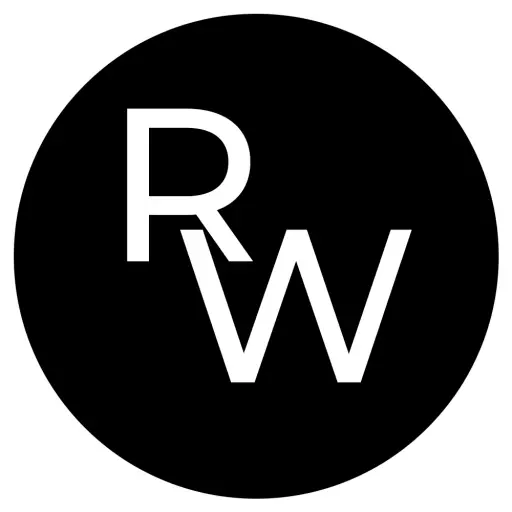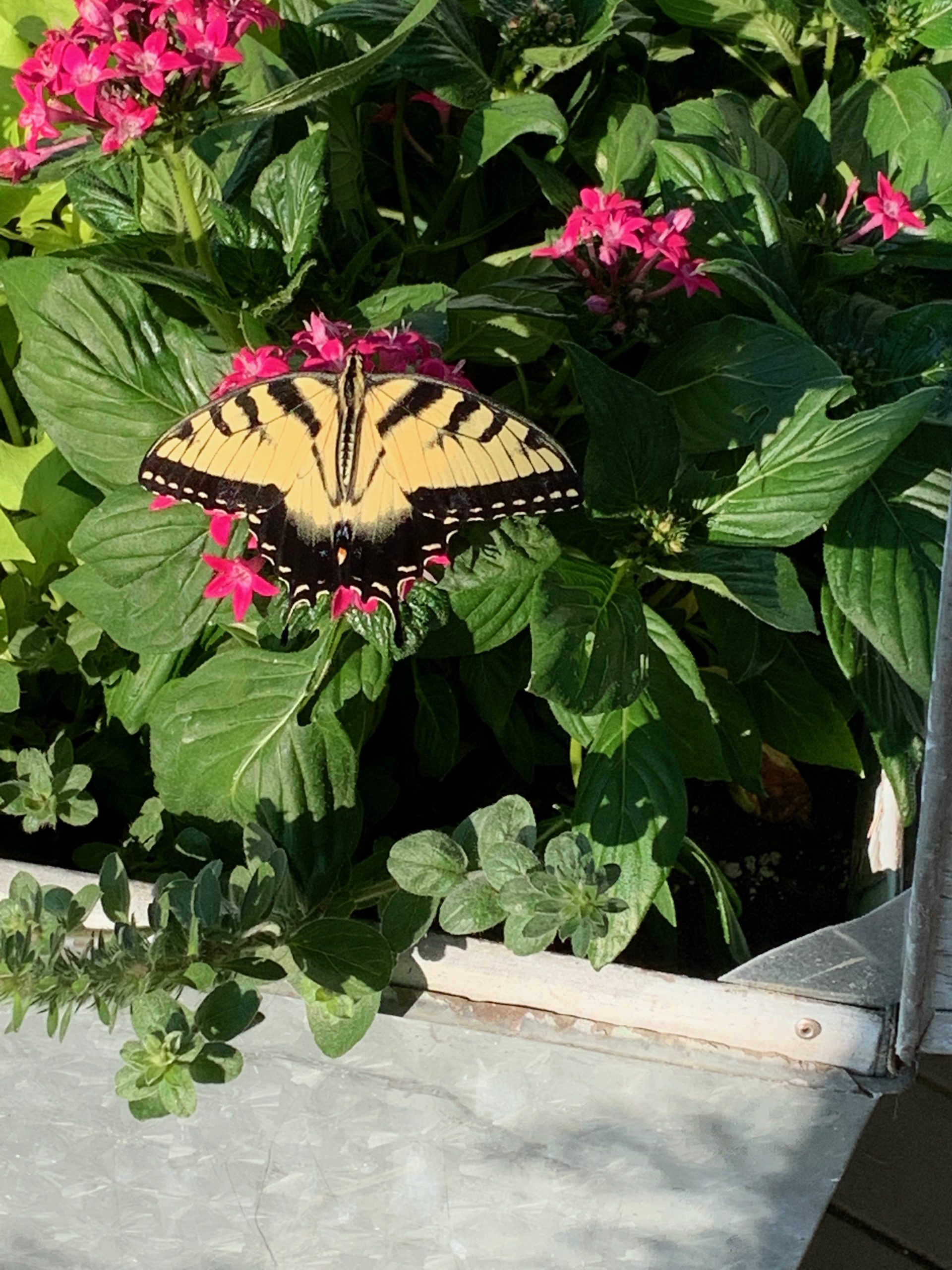A complete guide about how to raise tiger swallowtail butterflies, from finding eggs to feeding caterpillars to releasing butterflies!

We love raising different species of butterflies! It’s a fun family hobby that’s engaging and great for the environment. Kids and adults love witnessing the fascinating life cycle of butterflies, and tiger swallowtails are no exception.
In the wild, the survival rate for butterflies is quite low. Only one or two butterfly eggs out of every 100 laid survives long enough to become a butterfly. Caterpillars have a few defenses, but overall, they’re very susceptible to predators, disease, parasites and even the weather. And that’s just what nature throws at them. Add in humans and pesticides and insecticides, and it’s not easy out there for a caterpillar.
However, raising tiger swallowtail butterflies inside is fun and easier than you might think. You just need a few basic things to get started and a food source, and you’ll have everything you need to help boost the butterfly population.
Types of swallowtails
One of the coolest parts of raising swallowtails is the variety of swallowtail species. There are several different types of swallowtails, and they’re all beautiful. Swallowtail butterflies are large butterflies in the family Papilionidae and include more than 550 different species worldwide. Around 30 species live in North America.
A common characteristic of most swallowtail butterflies is a tail on their hind wings that looks like a swallow bird tail, although not all swallowtail butterflies have them.
There are four general groups of swallowtail butterflies in North America:
- Black swallowtails
- Giant swallowtails
- Tiger swallowtails
- Pipevine swallowtails
We live in Missouri where we have the following swallowtail butterflies:
- Pipevine Swallowtail
- Polydamas Swallowtail
- Zebra Swallowtail
- Ozark Swallowtail
- Black Swallowtail
- Eastern Tiger Swallowtail
- Pale Swallowtail
- Spicebush Swallowtail
- Palamedes Swallowtail
- Giant Swallowtail
Google the swallowtails in your area to see which species you can find near you.
What do tiger swallowtail caterpillars eat?
All caterpillars have specific plants they eat in the larval stage called host plants. Tiger swallowtail caterpillars have several host plants, many of which are large trees. You can find tiger swallowtail eggs and caterpillars on cottonwood, ash, birch, tulip, wild black berry, sweet bay magnolia and willow trees.
We planted a tulip tree that we collect our tiger swallowtails from. It’s still on the smaller side so still relatively easy to inspect the leaves.
Here are the host plants for the other common swallowtail caterpillars:
Black Swallowtail caterpillars eat plants from the carrot family like parsley, dill, fennel, and rue, along with common roadside wildflowers like Queen Anne’s lace.
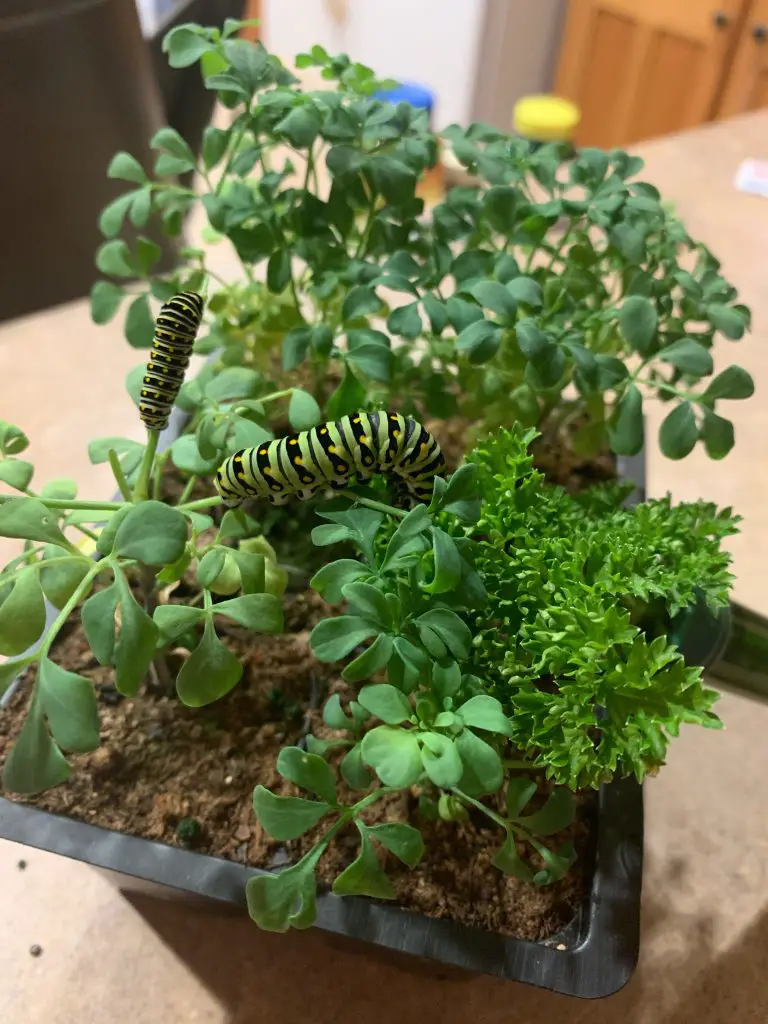
The Zebra Swallowtail caterpillar’s only host plant is the pawpaw tree. You can find pawpaw trees on the bank of a river or creek, and they are also small enough to plant as an ornamental tree in your yard. Zebra swallowtails are some of our favorite butterflies and I have yet to raise one successfully to a butterfly. But I do have a potted pawpaw tree waiting to find its forever home soon.

Giant Swallowtail caterpillars eat plants in the citrus family like orange, lemon tree, grapefruit, kumkuat, etc. They also feed on Hercules’ Club, Hop Tree, and Prickly Ash trees. But the easiest way to collect giant swallowtails eggs and caterpillars is on rue, which is also a host plant for the black swallowtail.
Pipevine Swallowtail caterpillars eat Virginia snakeroot, Dutchman’s pipe, and other members of genus Aristolochia (pipevines).
As you can see, there are plenty of host plant options for your garden to help you attract swallowtails butterflies to lay eggs.
How to find tiger swallowtail caterpillars and eggs
Once you have identified one of the tiger swallowtail’s host plants, check the leaves for a green-ish sphere. As the caterpillar is closer to hatching out of the egg, it may turn a darker color. Tiger swallowtails will lay their eggs on the top of the leaves of their host plant.
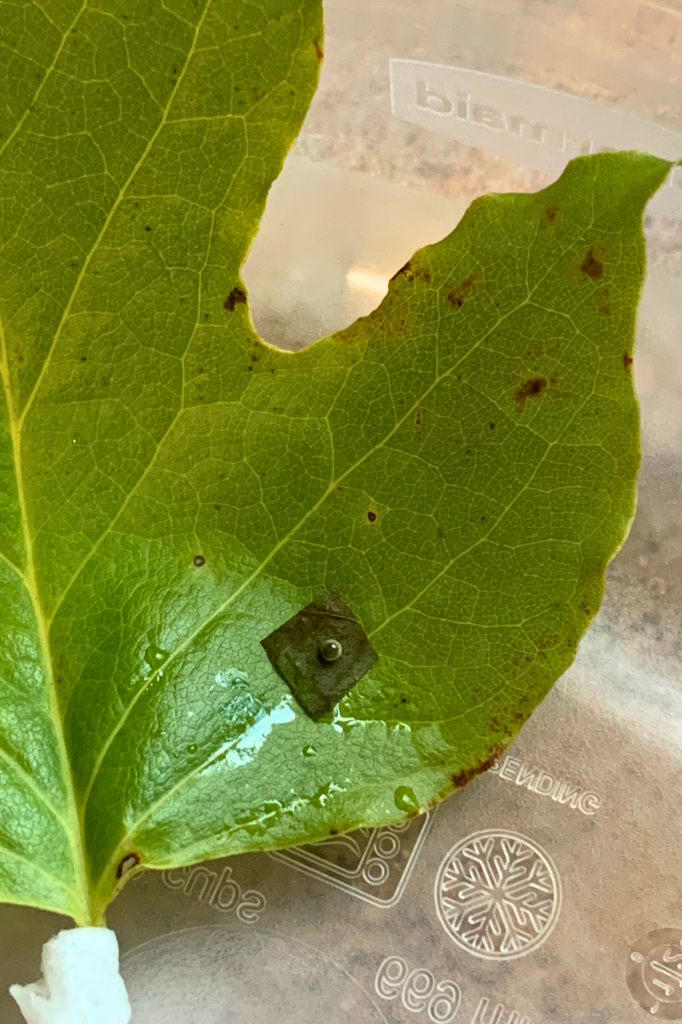
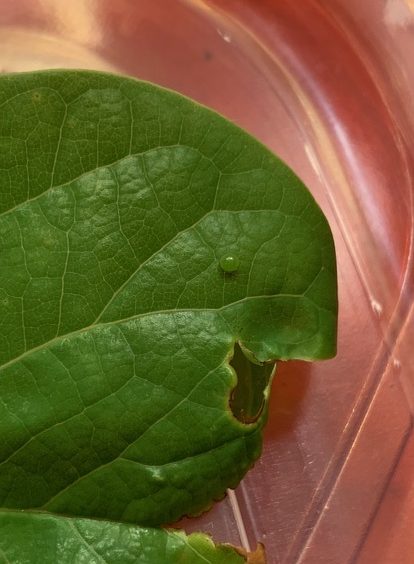
You can also bring small caterpillars inside to raise, however it is recommended you keep larger caterpillars quarantined from the rest of your caterpillar population. Most caterpillar eggs are free of parasites and disease, but caterpillars may not be so lucky.
Swallowtail caterpillars commonly fall victim to parasitic wasps. If you bring in an infected caterpillar, you may not notice until an adult wasp comes out of the chrysalis instead of a butterfly.
In this case, the wasp larva was laid inside the caterpillar and was using it as a host as the caterpillar was eating and growing. Then takes over inside the chrysalis.
A tip for finding freshly hatched caterpillars (with a lower chance of being infected) is to look for the tiny tracks on the leaves where they have started eating. Upon closer inspection, you may find a tiny caterpillar nearby!
Learn more about how to find butterfly eggs.
What to expect: Life cycle of a swallowtail caterpillar
The life cycle of the tiger swallowtail caterpillar varies, but they generally take about 2 months to complete the life cycle from egg to adult butterfly. There are four phases: egg, larva, pupal and adult – the butterfly. A caterpillar will hatch from its egg about 5-7 days after being laid.
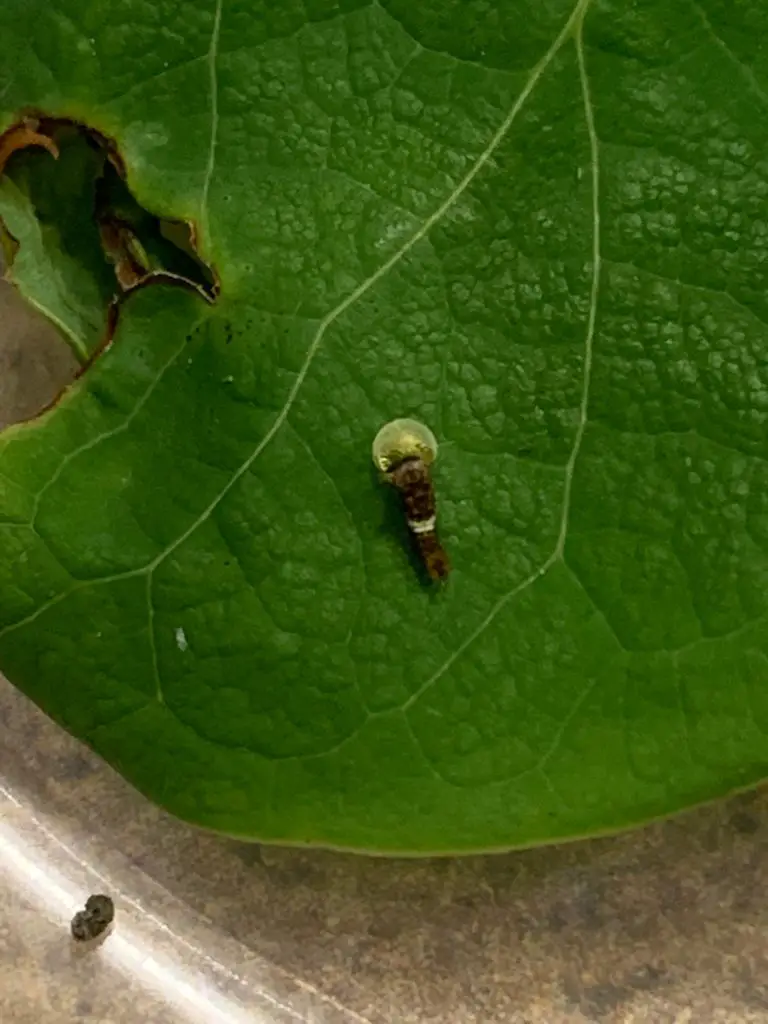
As a caterpillar, the tiger swallowtail eats as much as it can for three to four weeks and sheds its skin several times as it grows. These stages are called instars, and the tiger swallowtail caterpillar will go through five instars before it sheds its skin one final time and pupates into a chrysalis.
In the first couple instars, the tiger caterpillar is brown and white, resembling bird droppings. As it grows, it gradually turns more green until eventually it is totally green with eye markings on its back to make it look like a snake to potential predators.


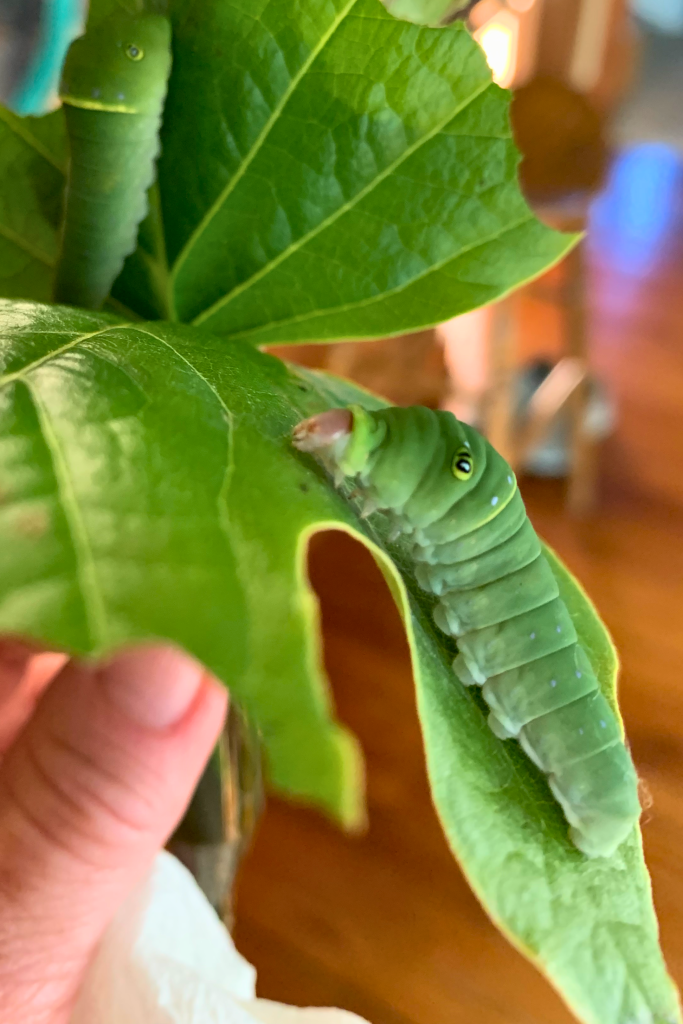
When its ready to pupate, the caterpillar will purge itself (a final elimination of liquidy frass) and find the perfect spot to prepare for its chrysalis. Tiger swallowtails also tend to turn a darker color when they’re almost ready to pupate.
Then it will form a silk button to attach to and curl into an upside down J shape while it creates a silk thread called a saddle to wrap around itself. Within the next day or so, it will shed its final skin and harden into a chrysalis.
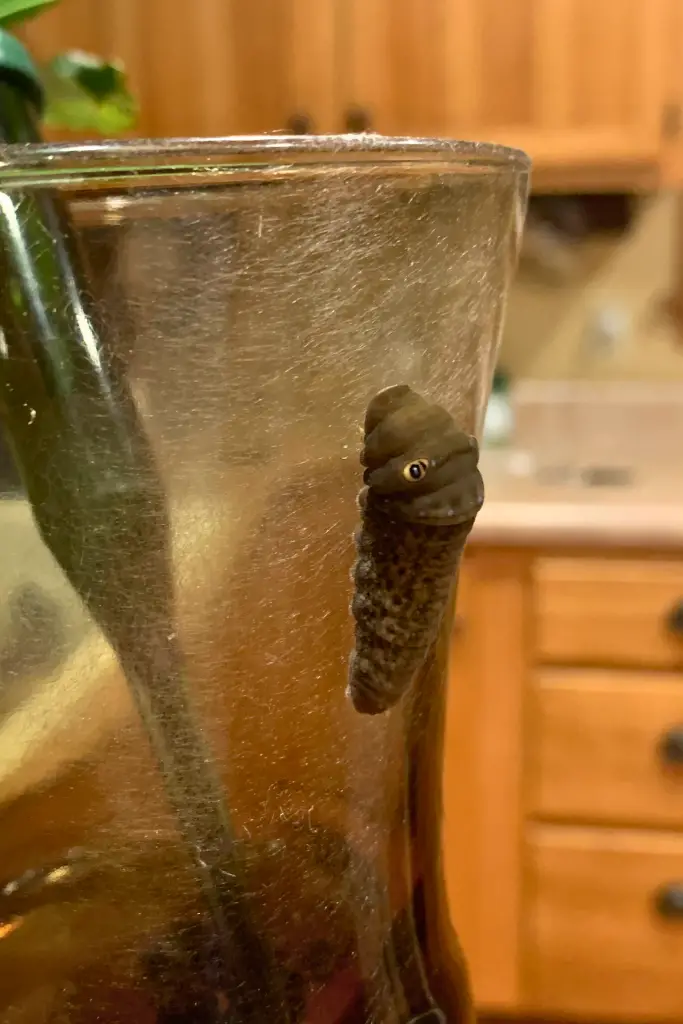
The pupal stage – when the caterpillar undergoes metamorphosis in its chrysalis – is the stage of the lifecycle that varies the most with different species. Some tiger swallowtails will emerge from their chrysalises (a process called eclosing) as butterflies within 2-3 weeks, and others will take longer, sometimes several months.
Unlike monarchs, swallowtails are also able to overwinter in their chrysalises in colder climates and eclose in the spring when the weather is more favorable.
If your butterfly decides to overwinter, you can store them in an unheated space so they are exposed to the colder weather of the season. A shed or unheated garage works great. This keeps the butterfly from thinking it’s warm outside due to the temperature of your home and eclosing in the middle of winter when it can’t survive outside.
After the butterfly ecloses, it will hang onto its chrysalis for a few hours while its wings dry. Then it can fly off an enjoy life as a butterfly for the next 10-45 days. Tiger swallowtails live for about two weeks as butterflies.
What you need to raise swallowtail butterflies
Beyond a steady supply of food, there are a few things that make raising butterflies easier.
While your caterpillars are small, it’s convenient to use rubbermaid containers with holes poked in the lids. As long as you keep it well stocked with host plants, your caterpillars will be happy in the container. As they get bigger, you can move them to a butterfly enclosure where they’ll make their chrysalis.
You can reuse the containers by periodically washing them well with bleach water and letting them dry completely before reintroducing eggs or caterpillars.
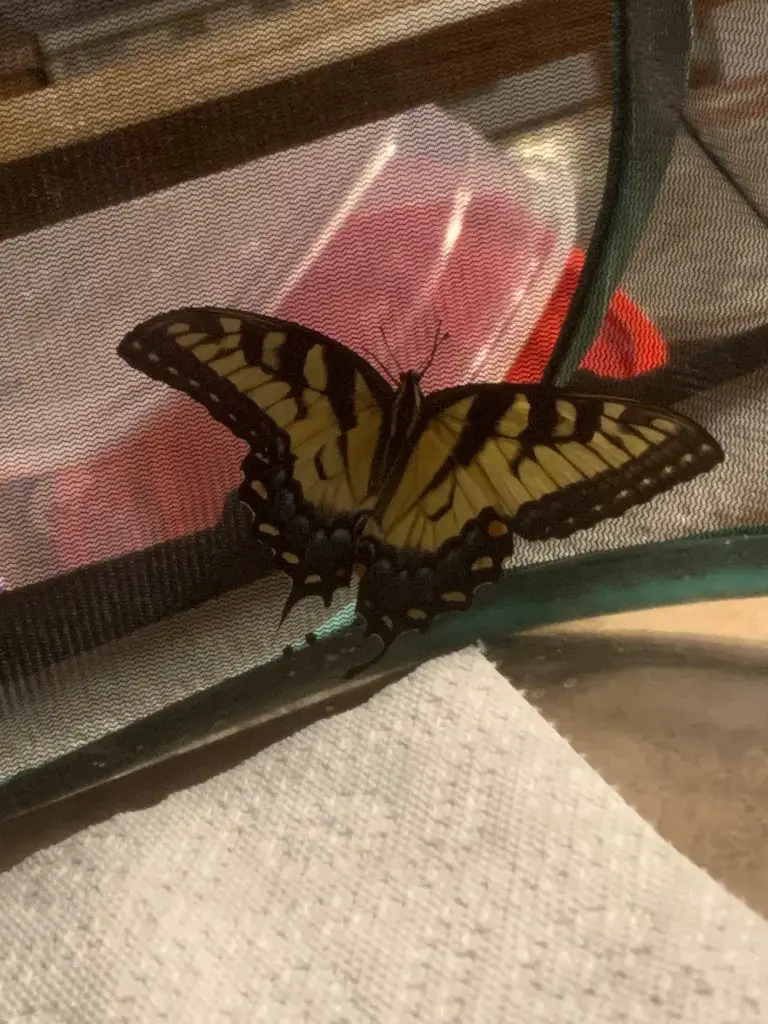
A butterfly enclosure is also a safe space for butterflies to let their wings dry before you release them. If butterfly wings are damaged before they’re dry, it can often be fatal for the butterfly. Mostly because it won’t be able to fly to find food.
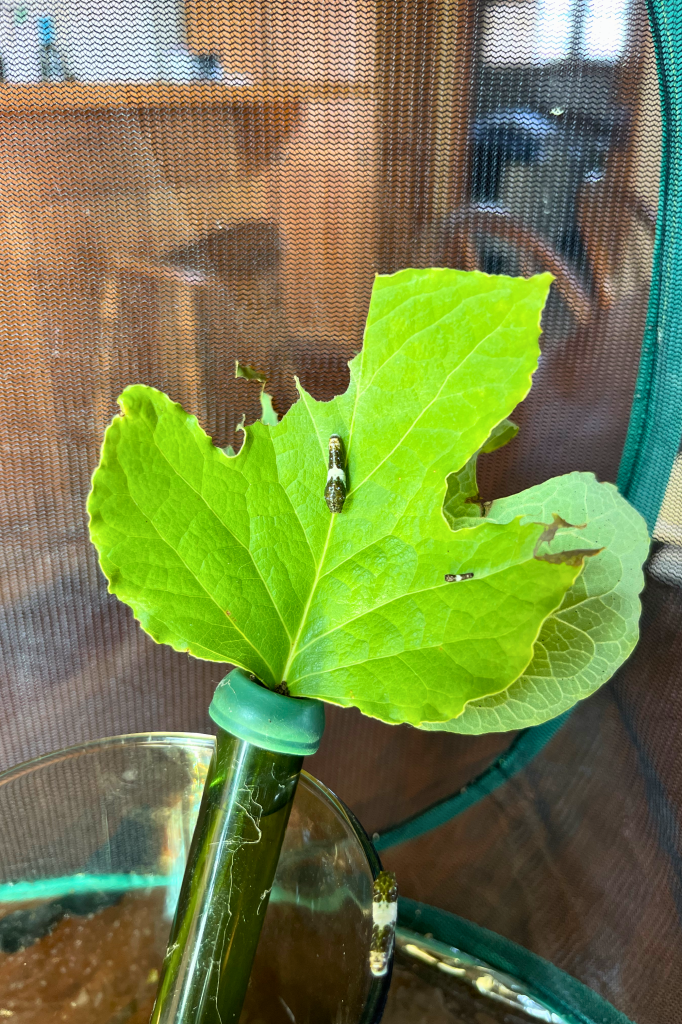
Another thing that is beneficial, though not required, is a floral watering tube. You can collect a small branch with several leaves and place it in the watering tube. This will keep your leaves fresher longer which is helpful as caterpillars grow and eat more food in short periods of time.
How to raise tiger swallowtail caterpillars inside

Once you collect your swallowtail eggs, place them in your clean container, and wait for them to hatch. If you watch closely you’ll see a tiny caterpillar within a day or two. Replace the leaves as the caterpillar eats them, or as they begin to wither. You’ll need to keep a fresh supply of food in the container at all times.
At first your tiny caterpillar will eat slowly, but as he grows he will consume his food much more quickly .You’ll be surprised at how much you’re feeding him toward the end of the of his caterpillar life. Fun fact: you won’t know if your caterpillar is male or female until its a butterfly.
As your caterpillar eats more, it will also poop more. Caterpillar poop is called frass. You’ll want to clean the frass out of the container at least once a day in the beginning, and probably twice a day by the second week.
As long as you provide a clean and well stocked home for your caterpillars, they’ll be growing and turning into butterflies in no time! Then you are ready for the most fun part of all, releasing your butterfly back into the wild, where hopefully they’ll choose to return to you and lay more eggs!
What is a dark morph tiger swallowtail?
When your butterfly emerges, you may be shocked to find it looks darker than most typical tiger swallowtails that are yellow with black tiger stripes.

This variation is still the same species, but is called a dark morph. It’s believed that some tiger swallowtails have adapted to mimic the spicebush swallowtail, which is poisonous. If you look closely, you can still see faint “tiger stripes” in the upper wings.
All dark morph tiger swallowtails are female, but not all female tiger swallowtails are dark morphs.


How to tell the difference between a male and female tiger swallowtail
Male tiger swallowtails will be mostly yellow and black while females will have more blue coloring on their bottom wings.
How to attract tiger swallowtails to your yard
Like all butterflies, tiger swallowtails will be attracted to your garden or yard if you have host plants and nectar plants. Plant a pollinator garden and add a few of their favorite host plants – like cottonwood, ash, birch, tulip, wild black berry, sweet bay magnolia and willow trees – and they will come.
Also avoid using pesticides and insecticides that may kill or deter butterflies from visiting your area.
I hope you found these tips about how to raise tiger swallowtail butterflies helpful and get to experience the joy of raising tiger swallowtail butterflies!


